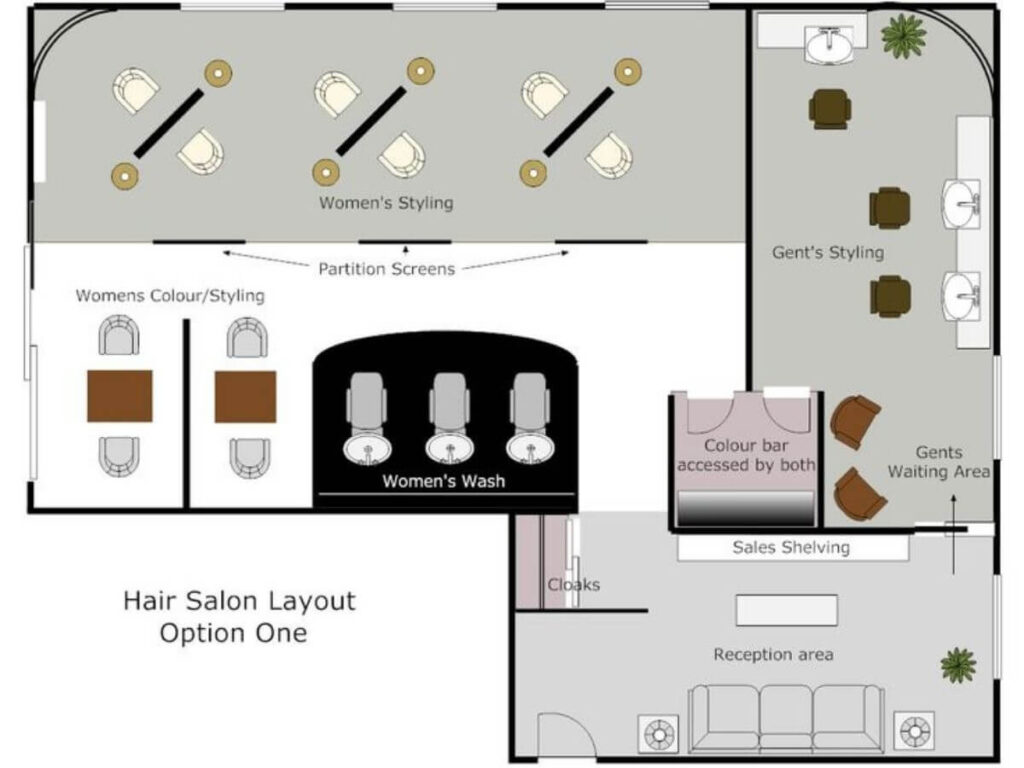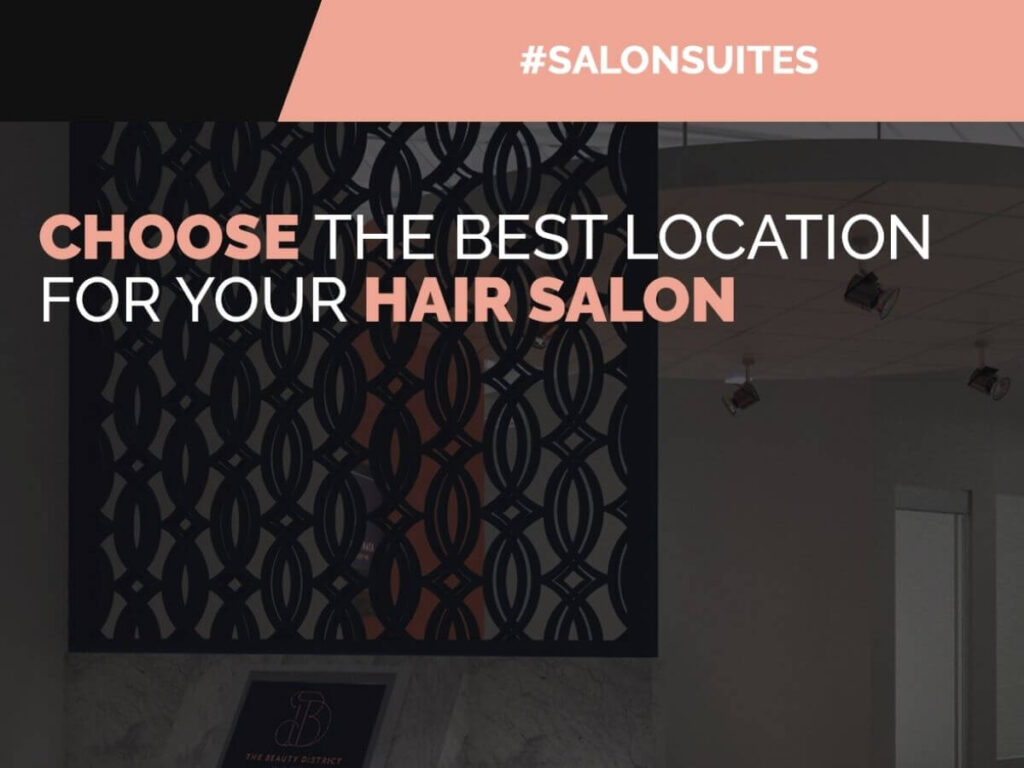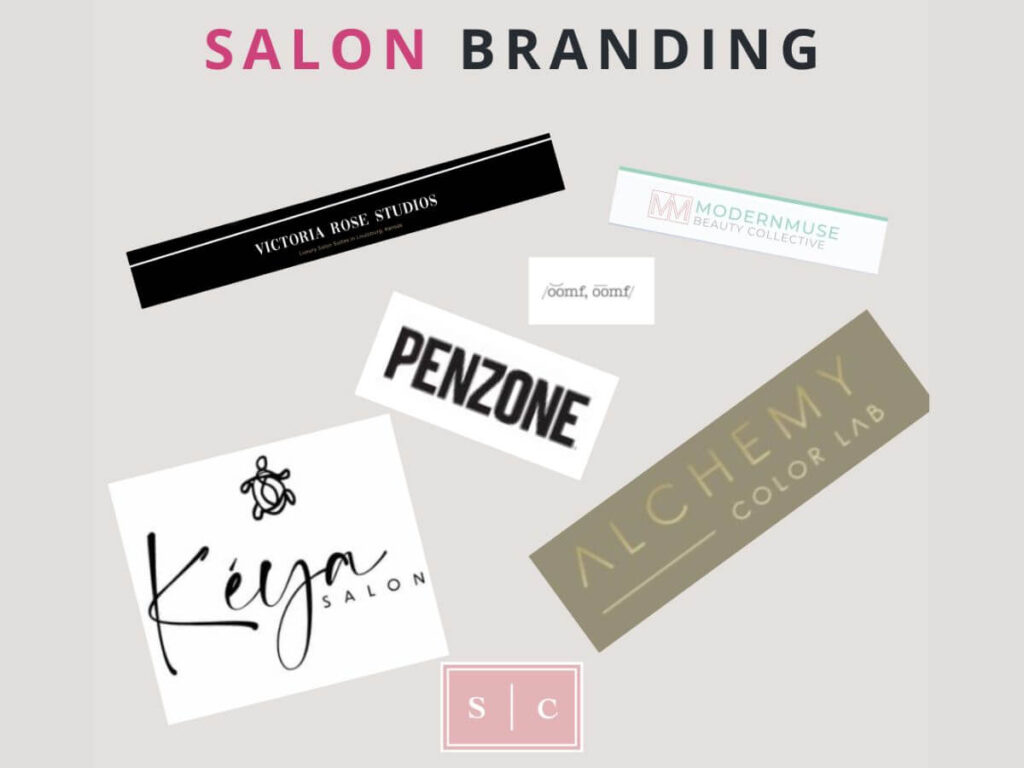I still remember the day I quit my job. My hands were shaking, my mind racing. Was I making a mistake? Owning a salon had always been my dream, but I had no idea where to start. Rent, licenses, equipment—it, it felt overwhelming.
Maybe you feel the same way. You love doing hair, but you’re tired of building someone else’s business. You want to step up and open your own salon, but the process feels overwhelming.
I know that feeling because I lived it. But here’s what I learned: Starting a salon is possible—even if you don’t have all the answers right now. And that’s exactly why I wrote this article.
In the next few sections, I’ll walk you through everything you need to know, from securing a location to getting your first clients.
By the time you finish reading, you’ll have a clear, step-by-step plan to turn your dream into reality.
Let’s start!
Step #1: Research and Develop a Business Plan
Before I opened my first salon, I thought I just needed a great location and skilled stylists. I quickly realized that without a solid business plan, even the best salons struggle.
Starting a successful hair salon begins with a well-researched and structured business plan. This plan serves as your roadmap, helping you secure funding, set clear goals, and make informed decisions. Here’s everything you need to cover:
Conduct Market Research
Before launching your salon, you need a deep understanding of the industry, competition, and target audience. Here are key areas to research:
- Industry Trends: Look into emerging hair and beauty trends, consumer preferences, and technological advancements in salon services.
- Competitor Analysis: Identify nearby salons, their service offerings, pricing strategies, and customer demographics.
- Target Market: Determine your ideal customers—age group, income level, preferences, and spending habits.
- Demand Analysis: Assess whether there’s a gap in the market that your salon can fill, such as organic hair care, luxury services, or specialized treatments.
Define Your Salon Concept
Your salon’s concept should reflect your brand, services, and target clientele. Here are key considerations:
- Salon Type: Will it be a high-end luxury salon, an affordable neighborhood salon, or a niche salon (organic hair care, men’s grooming, bridal styling)?
- Service Offerings: List core and additional services such as haircuts, styling, coloring, extensions, scalp treatments, and beauty add-ons like manicures or facials.
- Unique Selling Proposition (USP): What sets your salon apart? It could be exceptional customer service, premium organic products, or a specific hairstyling technique.
Develop a Detailed Business Plan
A structured business plan increases your chances of securing funding and ensures long-term success. Here are essential components:
- Executive Summary: Briefly outline your business vision, mission, and key objectives.
- Company Description: Explain your salon’s concept, target market, and location strategy.
- Market Analysis: Present your competitor research, industry trends, and customer demand insights.
- Service Offerings: Detail your salon’s primary and supplementary services.
- Business Model & Revenue Streams: Specify how your salon will generate income—service pricing, product sales, memberships, or subscription plans.
- Marketing Strategy: Outline your promotional methods, including social media, influencer partnerships, loyalty programs, and local advertising.

Step #2: Find the Perfect Location
Choosing the right location is one of the most critical decisions when opening a hair salon. Your location impacts foot traffic, visibility, customer convenience, and overall profitability. Below are the key factors to consider when selecting the ideal spot for your salon:
Know Your Target Clients
Who are your ideal customers? Are you catering to professionals who need quick appointments near offices? Or high-end clients who value privacy? Your location should match their habits and preferences.
Evaluate Foot Traffic and Accessibility
A high-traffic area might seem ideal, but not all traffic converts to paying clients. Look for areas where your target customers already go. Also, consider parking, public transport access, and nearby businesses that can bring in referrals.
Balance Cost and Value
A prime location comes with a high price tag. A lower-rent area might save money but could limit your clientele. Weigh the trade-offs. Will the extra rent pay off in client volume and visibility?
Check Lease Terms Carefully
Landlords often lock businesses into long-term leases with strict terms. Review everything, from rent increases to renovation allowances. Negotiating the right lease can save you thousands in the long run.
Consider Future Growth
Think beyond today. Will this space still work as your business expands? A salon that feels too small in a year can limit your growth. Look for a location that allows flexibility.

Step #3: Source Materials and Equipment Needed
I underestimated how much equipment I actually needed. It wasn’t just styling chairs and mirrors—it was everything from high-quality shears to reliable booking software.
Getting the right materials and equipment from the start saves you from costly replacements and inefficiencies later.
Make a List of Essentials
Start with the must-haves:
- Salon Stations – Chairs, mirrors, and storage for tools.
- Wash Stations – Comfortable sinks with proper plumbing.
- Styling Tools – Hairdryers, curling irons, and clippers.
- Salon Furniture – Reception desk, waiting area seating, and shelves for retail products.
- Point-of-Sale (POS) System – For managing appointments and payments.
Choose Quality Over Cost-Cutting
Cheap equipment may save money upfront, but it often needs frequent repairs or replacements. Invest in durable, professional-grade tools and furniture that will last.
Find Reliable Suppliers
Not all vendors offer the same level of service or pricing. Compare suppliers based on:
- Pricing – Bulk discounts and wholesale rates.
- Delivery Times – Reliable shipping to avoid delays.
- Warranty & Support – Coverage in case of defects or breakdowns.

Step #4: Obtain Legal Permits, Licenses, and Insurance
I thought the hardest part was finding a location and hiring staff. Then I faced the paperwork. Without the right permits and licenses, you can’t legally operate—and skipping this step can lead to fines or shutdowns.
Handling legal requirements may not be exciting, but it protects your business and keeps everything running smoothly. Please check all the details below:
Register Your Business
Choose a legal structure that fits your goals. Whether it’s a sole proprietorship, LLC, or corporation, each option impacts taxes, liability, and operations. If unsure, consult a business advisor.
Get the Required Licenses and Permits
Check with local and state authorities for:
- Business License – Allows you to operate legally.
- Cosmetology License – Required for stylists and salon professionals.
- Health and Safety Permits – Ensures compliance with sanitation regulations.
- Building Permits – Needed if renovating your space.
Secure Business Insurance
Accidents happen, and insurance protects you from financial risks. Key policies include:
- General Liability Insurance – Covers injuries or property damage.
- Professional Liability Insurance – Protects against claims of service-related issues.
- Workers’ Compensation – Required if you have employees.
Understand Tax and Employment Laws
Register for an EIN (Employer Identification Number) if hiring staff. Stay compliant with payroll taxes, labor laws, and employee contracts. Missing these details can lead to legal trouble.
Getting legal requirements in place may feel overwhelming, but it’s necessary. Taking care of this early saves you from bigger problems down the road.
Step #5: Hire and Train a Skilled Team
Building a strong salon team is essential for delivering high-quality services and creating a positive customer experience. Follow these instructions to hire and train top talent for your salon:
Define Roles and Expectations
Before hiring, be clear on the positions you need:
- Hairstylists – skilled in cutting, coloring, and styling.
- Shampoo Assistants – support stylists and improve workflow.
- Receptionists – manage appointments and customer service.
- Salon Managers – oversee daily operations and staff.
Look for More Than Just Talent
Experience matters, but attitude is just as important. Hire professionals who are punctual, friendly, and eager to learn. A team that works well together creates a better client experience.
Invest in Training
Even experienced stylists need training on your salon’s techniques, products, and customer service approach. Offer workshops or mentorship to keep skills sharp.
Create a Positive Work Culture
A supportive and professional environment boosts employee retention. Fair wages, incentives, and clear communication keep your team motivated.
Hiring the right people takes time, but a well-trained team is the backbone of a successful salon. Invest in them, and your business will grow.

Step #6: Set Up Your Service Offer and Pricing
Your service list and pricing should match your target market, business goals, and operating costs. It’s not just about covering expenses—it’s about profitability and long-term growth. Here’s how you can setup your service offerings:
Define Your Core Services
Start with the essentials. Common salon services include:
- Haircuts & Styling – Women’s, men’s, and children’s cuts.
- Color Treatments – Highlights, balayage, and full-color services.
- Chemical Treatments – Perms, relaxers, and keratin treatments.
- Scalp & Hair Treatments – Deep conditioning and repair services.
- Additional Services – Blowouts, bridal styling, and extensions (if applicable).
Price for Profitability
Pricing isn’t just about being competitive—it must cover costs and generate profit. Consider:
- Material Costs – Products and supplies used per service.
- Labor Costs – Time spent by stylists, including wages and commissions.
- Market Rates – Compare local salon pricing but don’t underprice your services.
- Perceived Value – Higher prices can reflect expertise and premium service quality.
Offer Service Packages and Memberships
Bundling services or offering loyalty programs can boost revenue. Options like monthly memberships for blowouts or discounts on bundled services encourage repeat visits.
Test and Adjust
Pricing isn’t set in stone. Monitor client feedback, service demand, and profitability to refine your menu over time.

Step #7: Build Your Salon Brand and Market Your Business
Your salon’s brand defines how customers perceive your business, while a strong marketing strategy attracts and retains clients. Follow these steps to establish a compelling brand identity and implement effective marketing strategies:
Define Your Salon Brand
Your brand should reflect your target audience and service style. Ask yourself:
- What makes your salon different from competitors?
- What experience do you want clients to have?
- How do you want people to describe your salon?
Use these answers to shape your salon’s name, logo, interior design, and customer service approach.
Creating a Strong Online Presence
Most clients find salons online. A professional website and active social media pages are essential.
- Website: Include service details, pricing, online booking, and client testimonials.
- Social Media: Post before-and-after photos, promotions, and behind-the-scenes content.
- Google Business Profile: Helps local clients find you through search and maps.
Use Local and Digital Marketing
- Referral Programs – Offer discounts for client referrals.
- Email & SMS Marketing – Send appointment reminders, promotions, and loyalty rewards.
- Partnerships – Team up with local businesses to cross-promote services.
- Paid Ads – Facebook, Instagram, and Google Ads can help attract new clients.
Monitor and Adjust Your Strategy
Marketing isn’t a one-time effort. Track which strategies bring in the most clients and adjust as needed.
A strong brand and smart marketing builds trust, attracts loyal clients, and keeps your salon booked. Start with clear messaging and get it in front of the right audience.

Conclusion
You now have the blueprint. From planning to marketing, every step is mapped out. The only thing left? Putting it into action.
When I finally launched my salon, it wasn’t perfect—but I started. That’s what matters. You’ll adjust along the way.
The right plan makes success possible. The next step is yours.
Are you ready to take that leap?
Contact us today and let’s build something unique together!
Explore More Helpful Resources
If you’re looking for more insights, we’ve put together a list of helpful articles that you might enjoy:
Still haven’t found what you’re looking for? Don’t hesitate to contact us. We’re available around the clock to assist you.







